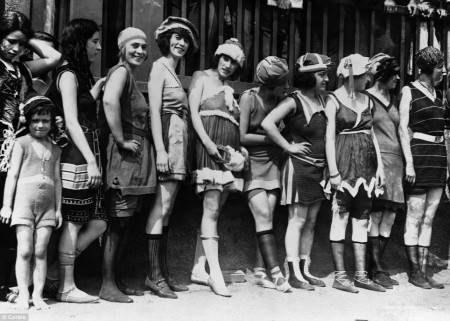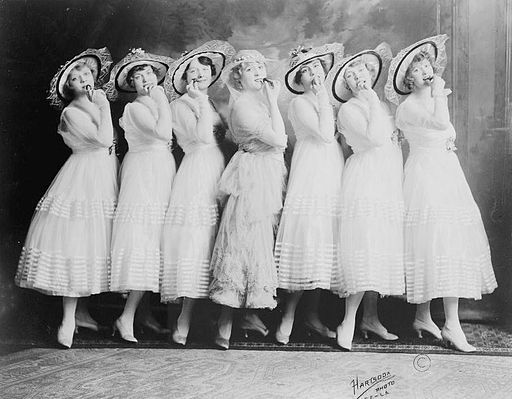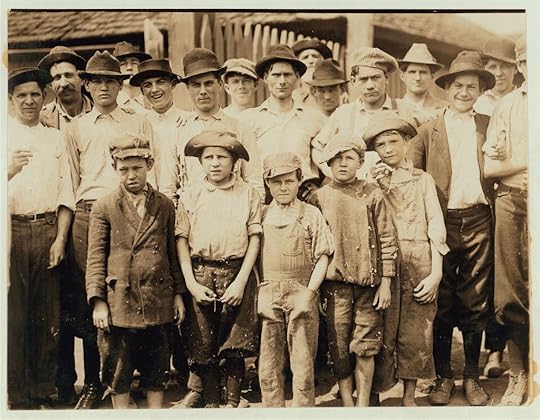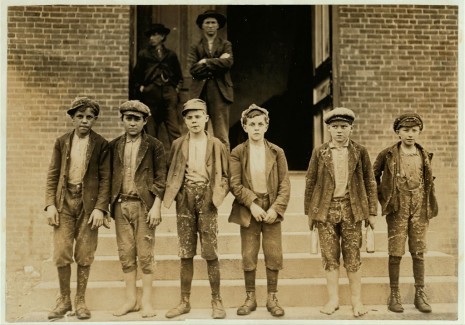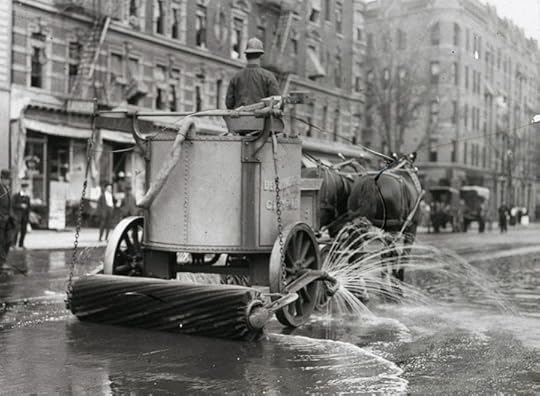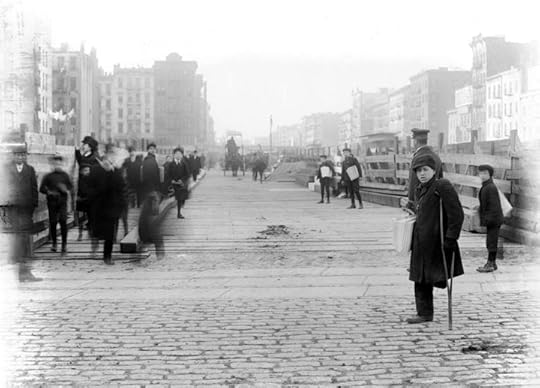Sarah Albee's Blog, page 9
September 17, 2015
End of Summer Send-Off
As a final farewell to summer (*sniff*) I thought I’d post some amazing panoramic images from the Library of Congress, showing bathing beauties from the “aughts,” teens, and twenties. But then I realized there were no people of color in any of these images. In those days, beaches were segregated. I quickly discovered that it’s really hard to find pictures of people of color frolicking on beaches.
Finally, though, I found this cool picture. It’s from a 1930 YMCA camp, and I got permission to post it from the National Museum of American History. My favorite is the girl on the far right. Also the kid with the ball, third from right.
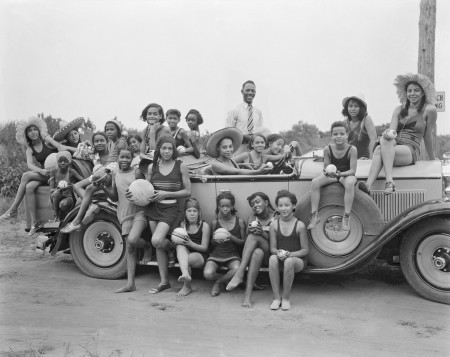
Scurlock Studio Records, Archives Center, National Museum of American History, Smithsonian Institution. Used with permission
Here are the panoramic pictures. I love the bathing suits, the varied and lovely bodies that are completely innocent of gym workouts, and the delight you see in the subjects’ faces. I think you can click on each one to see it in close-up, and I urge you to do so.
The post End of Summer Send-Off appeared first on Sarah Albee.
September 14, 2015
Suck it Up
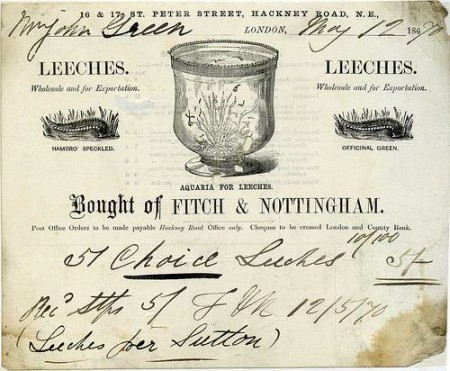 I’m reading a lot of medical journals these days. As I was browsing Medical Magazine, dated 1833, I kept coming across lines like this one:
I’m reading a lot of medical journals these days. As I was browsing Medical Magazine, dated 1833, I kept coming across lines like this one:

A quick search of the whole journal brought up dozens upon dozens of references to using leeches to cure any number of ills. Here’s just a small sampling:
For rheumatic fever:
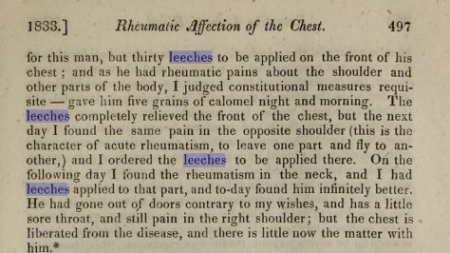 For glossitis (an inflammation of the tongue):
For glossitis (an inflammation of the tongue):
 For epilepsy:
For epilepsy:
 And cholera:
And cholera:
 Eye pain? Why not apply leeches to the eyelids?
Eye pain? Why not apply leeches to the eyelids?
 For insanity and menstrual disorders? They put them *cringe* here:
For insanity and menstrual disorders? They put them *cringe* here:
 And for mumps, they put them on the *wince* testicles:
And for mumps, they put them on the *wince* testicles:
 Anyway, you get the idea.
Anyway, you get the idea.
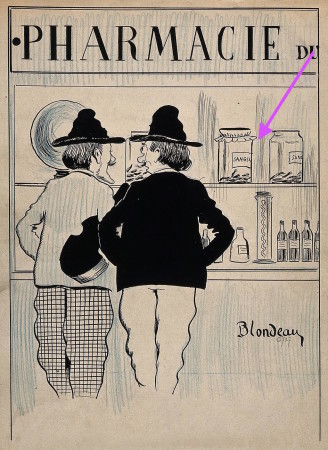
The post Suck it Up appeared first on Sarah Albee.
September 10, 2015
Bad’s News
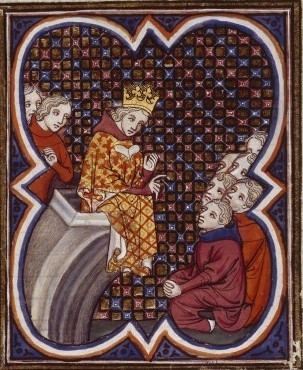
The Regent (later King Charles V, right) and the King of Navarre (Charles II the Bad, left) conferring in a tent. From the Chroniques de France ou de St Denis, BL Royal MS 20 C vii f. 135v
Meet Charles, King of Navarre (1332 – 1387), also known as Charles the Bad. Because he tried, unsuccessfully, to conquer both France and Spain, the French called him Charles Le Mauvais, and the Spanish, Carlos el Malo.
What was so “the bad” about him? A combination of unpopular taxation policies, endless treasonous plotting with the English to overthrow his father-in-law, Charles V, the king of France, and for a generally dissolute lifestyle. One of the guys he was known to hang out with was called Peter the Cruel (from Seville). Barbara Tuchman describes him as a “supreme troublemaker,” who was “absolutely without scruple.” (132)*
But it’s his gruesome death for which he is most remembered. On a winter night in 1386 he fell ill with chills and shivering. According to Tom Standage in his fascinating book, A History of the World in Six Glasses**, Le Mauvais’s doctor ordered him wrapped up in cloth. The doctor decided to try the new go-to medicine, distilled wine, known as aqua vitae. Distilled wine was way higher in alcohol than regular wine or other fermented drinks. At the time, it was thought that aqua vitae could be helpful either by having the patient drink it or by applying it topically to the affected areas—in the case of the debauched king, that meant his whole body, as he had fever and chills. The doctor opted for the topical approach. Oopsadaisy. (Other accounts say it was brandy, but I’m pretty sure brandy that’s been repeatedly distilled may be the same thing as aqua vitae.)
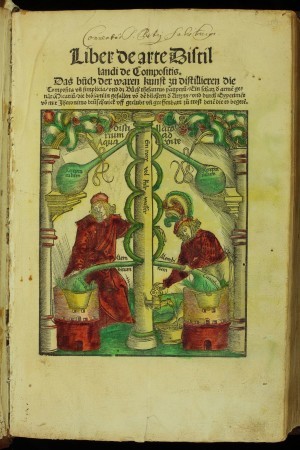
Distilling apparatus
They soaked the king’s sheets with aqua vitae or maybe brandy, and wrapped him up from head to toe, to warm his body and induce sweating. But then, “One of the female [others say a male valet] attendants of the palace, charged to sew up the cloth that contained the patient, having come to the neck, the fixed point where she was to finish her seam, made a knot according to custom; but as there was still remaining an end of thread, instead of cutting it as usual with scissors, she had recourse to the candle, which immediately set fire to the whole cloth. Being terrified, she ran away, and abandoned the king, who was thus burnt alive in his own palace.”** He lived for two agonizing weeks before expiring.
* Barbara Tuchman, A Distant Mirror [mine is the 1978 edition]
**History of the world in Six Glasses by Tom Standage page 98-100
***Francis Blagdon, 1803, Paris as it was and as it is: or, A sketch of the French capital, illustrative of the effects of the revolution, with respect to sciences, literature, arts, religion, education, manners, and amusements; comprising also a correct account of the most remarkable national establishments and public buildings
The post Bad’s News appeared first on Sarah Albee.
September 7, 2015
Happy Labor Day
Hello, Faithful Friends!
I’ve been away from the blog for a month, and–cough–am sort of still away, for a few more days. My book deadline is looming, but I’ve made great progress on it. And yet, I’m eking out a few more days of work and posting this Labor Day blog from last year…
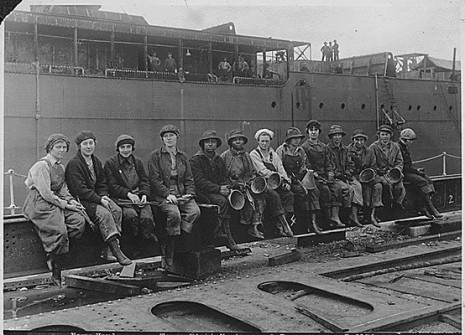 Labor Day has been celebrated on the first Monday of September every year since Grover Cleveland formally declared it a holiday for the working classes, in 1894.
Labor Day has been celebrated on the first Monday of September every year since Grover Cleveland formally declared it a holiday for the working classes, in 1894.
The no-white-after-Labor-Day rule probably began during the late nineteenth century, when newly-well-to-do American families returned from their country houses to their homes and jobs in the cities. It would have been out of the question to wear white in the grimy, coal-smoky urban centers. (For some cool pics I posted on a former blog about smoky cities, click here. )
In honor of Labor Day, I’ve posted some pictures of people at work. For picture credits, scroll down. If you’re on Pinterest, I have a “people at work” board you can visit as well.

 Images:
Images:Lunch break, Courtesy NYC Municipal Archives
Seven “Canary Cottage” young women of the burlesque theater, 1916 (Library of Congress: LC-USZ62-113672)
Lewis Hine, Noon hour at Massachusetts Mill, Lindale, Ga. 1914 (Library of Congress: LC-DIG-ncl-2004003934/PP/)
Lewis Hine, Noon hour at Massachusetts Mill, Lindale, Ga. 1914 (Library of Congress: LC-DIG-nclc-01356)
A two-horse team street cleaner, with sprayer, squeegee, and roller at rear. (Courtesy NYC Municipal Archives)
A one-legged newspaper boy and other “newsies”, on Delancey Street, on December 26, 1906. (Eugene de Salignac/Courtesy NYC Municipal Archives)
Lewis Hine, Noon hour at Massachusetts Mill, Lindale, Ga. 1914 (Library of Congress: LC-DIG-nclc-02754v)
“Drawing-in” -15 years. Berkshire Cotton Mills. Location: Adams, Massachusetts (Library of Congress http://hdl.loc.gov/loc.pnp/nclc.03113)
The post Happy Labor Day appeared first on Sarah Albee.
August 3, 2015
We Interrupt This Blog…
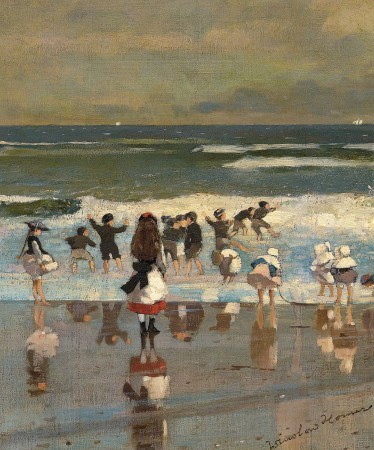 Hello, Dear Reader, and thank you for stopping by my site. I’ve decided to take the month of August off from blogging. I am working on not one, but two new book projects, plus finishing up my last book, and I really need every moment I can to work on these. Plus I’m sneaking in a little vacation time as well. I will be back after Labor Day. Please stop by again then!
Hello, Dear Reader, and thank you for stopping by my site. I’ve decided to take the month of August off from blogging. I am working on not one, but two new book projects, plus finishing up my last book, and I really need every moment I can to work on these. Plus I’m sneaking in a little vacation time as well. I will be back after Labor Day. Please stop by again then!
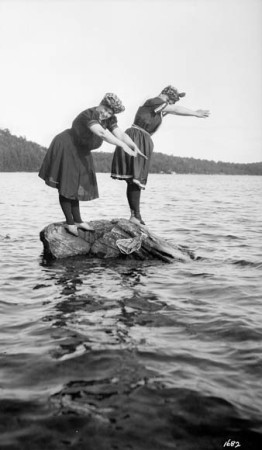
The post We Interrupt This Blog… appeared first on Sarah Albee.
July 30, 2015
Author Event: Hotchkiss Library of Sharon
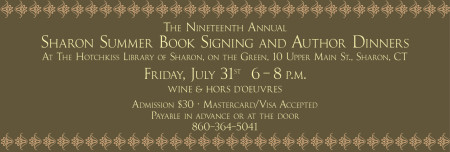 Tomorrow evening (Friday, July 30th) I’ll be signing books at the annual Hotchkiss Library of Sharon Book Signing in Sharon, CT. I participated last year and it was a fantastic experience, with a huge, enthusiastic crowd despite a driving downpour. This year it’s supposed to be perfect weather. There’s also a special event for kids– Children and their caregivers will receive free, early admission, with refreshments, from 4:30 to 5:30pm. I’m also looking forward to catching up with some of my favorite kid lit authors.
Tomorrow evening (Friday, July 30th) I’ll be signing books at the annual Hotchkiss Library of Sharon Book Signing in Sharon, CT. I participated last year and it was a fantastic experience, with a huge, enthusiastic crowd despite a driving downpour. This year it’s supposed to be perfect weather. There’s also a special event for kids– Children and their caregivers will receive free, early admission, with refreshments, from 4:30 to 5:30pm. I’m also looking forward to catching up with some of my favorite kid lit authors.
Hope to see some of you there!
The post Author Event: Hotchkiss Library of Sharon appeared first on Sarah Albee.
July 27, 2015
Frenemas
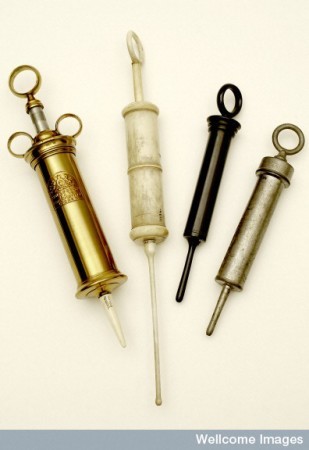
Brass, ivory, ebony and pewter enema syringes Wellcome Library, London.
I’m still deep in the midst of picture research for an upcoming book. In this blog post I wrote about the preponderance of pictures of physicians taking patients’ pulses, and in this blog post I posted a bunch of images of physicians examining patients’ urine. Here’s a picture that shows both at the same time.
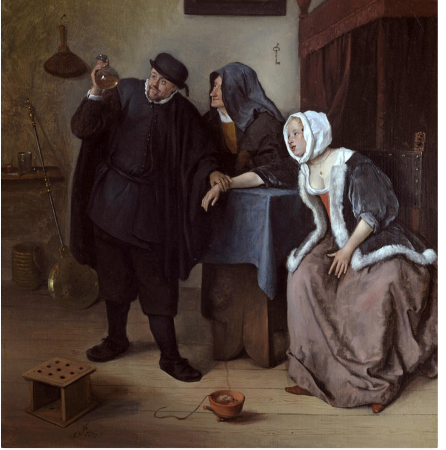
This is by artist Jan Steen, from the seventeenth century. I like the foot warmer in the foreground–you put coals in the crockery and set it under that little stool, and the whole thing can be shoved under your skirts to keep you warm and toasty while you embroider or churn butter or whatever.
Pulse- and urine-checks were about the extent of what highly-paid medieval and Renaissance physicians could do for their patients. Which is probably just as well, since they had pretty scant knowledge of anatomy, forbidden as they were by the Church to dissect bodies. Cutting into a living body was a job left to the less-exalted barber surgeons, who, besides performing services like blood-letting and amputation, could also shave you or give you an enema.
And that leads us to enemas. An enema is a way to introduce a medicine or a “cleansing” agent by means of injecting it up the butt. Enemas (also called clysters or glisters) were extremely popular in western European medicine for quite a few centuries. They’re still popular in Russia, reports my sister, who lives there. At the court of Louis XIV, enemas were thought to be good for your complexion and to keep the mind sharp. The king had thousands of them over his lifetime, sometimes as many as four a day. Certain pharmacists specialized in enemas, and hung huge pictures of butt-plungers outside of their shops. Poisoned enemas were used from time to time to dispatch enemies.
A quick search of “enemas in artwork” on wiki and at the Wellcome Library yields dozens of pictures. I’ll spare you the explicit ones, but here’s a sampling of pictures of, er, imminent enemas. (Say that five times fast.)
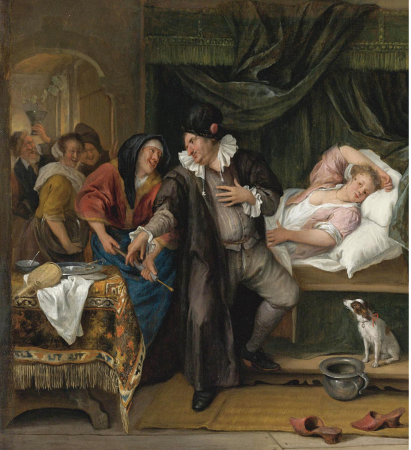
Another Jan Steen, showing another creepy doctor with a young female patient. Note the enema syringe in his assistant’s hand. Ew.
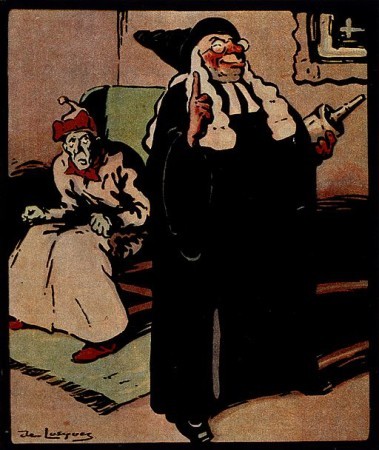
1909
Wellcome Library
![V0010765 A young fashionable apothecary-surgeon(?) about to give a si Credit: Wellcome Library, London. Wellcome Images images@wellcome.ac.uk http://wellcomeimages.org A young fashionable apothecary-surgeon(?) about to give a sick wealthy lady an enema. Engraving by A. Bosse, 16--. By: Abraham BossePublished: [16--] Copyrighted work available under Creative Commons Attribution only licence CC BY 4.0 http://creativecommons.org/licenses/by/4.0/](https://i.gr-assets.com/images/S/compressed.photo.goodreads.com/hostedimages/1438487138i/15715882.jpg)
“A young fashionable apothecary-surgeon(?) about to give a sick wealthy lady an enema.” Note the servant on the left, who carries an easy chair (to “do one’s ease”). The chamber pot would sit inside it. Wellcome Library
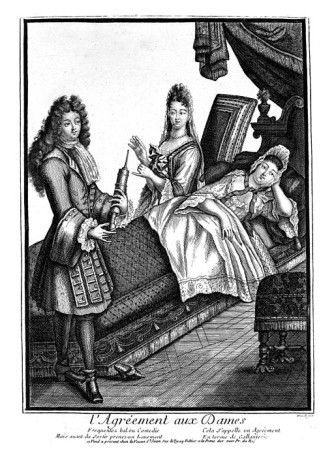
The Wellcome Library caption for this 18th century image: “A fashionable lady being given an enema by a charming young man.” Ummm, huh. Do you suppose it’s a first date?
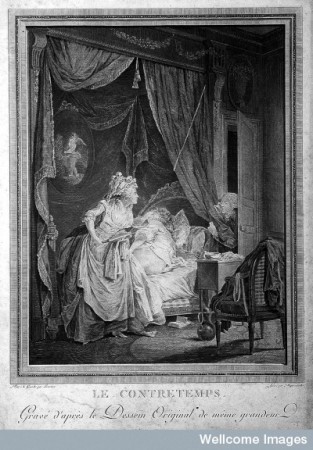
“A gentlemen pays an unexpected call on a lady friend only to discover she is in the middle of having an enema.” Awkward.
(Wellcome Library)
The post Frenemas appeared first on Sarah Albee.
July 23, 2015
Hello Mutter
I just returned from a research trip to Philadelphia, where, among other things, I visited the Mutter Museum. 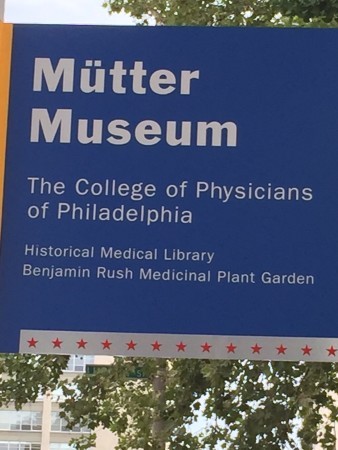 It was founded in 1863, and has been at its present location, at The College of Physicians, since 1909. The mission of the museum, as stated on their website : The Mütter Museum helps the public appreciate the mysteries and beauty of the human body while understanding the history of diagnosis and treatment of disease.
It was founded in 1863, and has been at its present location, at The College of Physicians, since 1909. The mission of the museum, as stated on their website : The Mütter Museum helps the public appreciate the mysteries and beauty of the human body while understanding the history of diagnosis and treatment of disease.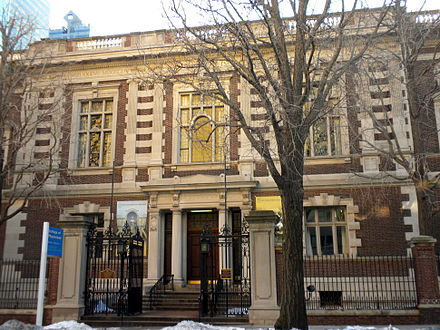 The museum houses thousands of osteological specimens, wet specimens, and wax models. I think of myself as having a pretty strong constitution when it comes to this sort of thing, but even I felt a little queasy after half an hour of eight-foot-long engorged colons and forty-pound scrotal tumors. You feel a little . . . voyeuristic. Perhaps you’ll be relieved to know that visitors are not allowed to take pictures inside, so you’ll be spared the visuals on these.
The museum houses thousands of osteological specimens, wet specimens, and wax models. I think of myself as having a pretty strong constitution when it comes to this sort of thing, but even I felt a little queasy after half an hour of eight-foot-long engorged colons and forty-pound scrotal tumors. You feel a little . . . voyeuristic. Perhaps you’ll be relieved to know that visitors are not allowed to take pictures inside, so you’ll be spared the visuals on these.
Once I focused on what I’d come to see—the exhibit about Vesalius (I’ve blogged about him here), the skull showing the ravages of tertiary syphilis, the display on the use of anesthesia in the Civil War, and the Benjamin Rush memorial medicinal garden, I felt, well, right as rain again.
Rush was a signer of the Declaration and helped found The College of Physicians of Philadelphia in 1787. Here’s the pretty garden with no dead people parts in it: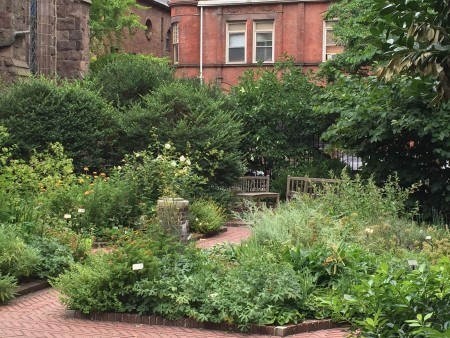
The post Hello Mutter appeared first on Sarah Albee.
July 20, 2015
Confratute 2015
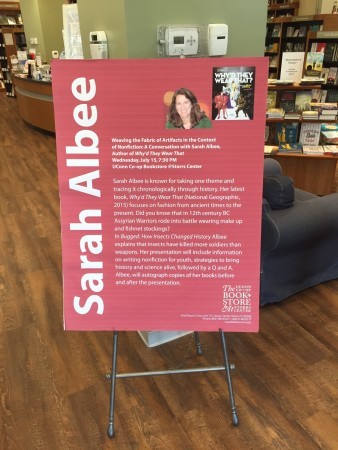 Last week I was at the UConn Co-op for a bookstore visit followed by a conversation with the amazing Susannah Richards, as part of the Confratute program.
Last week I was at the UConn Co-op for a bookstore visit followed by a conversation with the amazing Susannah Richards, as part of the Confratute program.
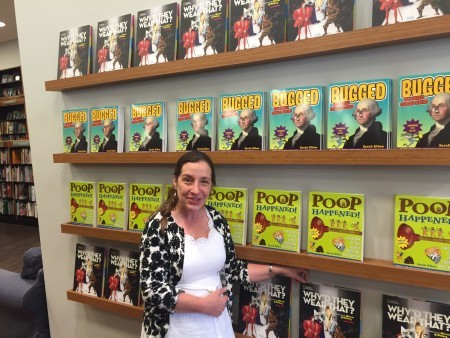
Here’s Susannah!
Susannah is on the faculty at Eastern Connecticut State University, and she knows everything there is to know about children’s literature, and she knows everyone there is to know who is involved in the world of kid lit. She’s been on the Newbery Award Committee and regularly reviews and presents on books for youth at international, national, state, and local conferences. Confratuteis a summer institute on enrichment-based differentiated teaching held at the University of Connecticut, Storrs campus. It’s amazing to see her in action. She’s not a big person, but she has a big voice, and I watched her hand-sell about four hundred books to a crowd of teachers and random passers by in the two hours I was hanging around the bookstore–including at least 200 of mine.
The topic of our discussion was “Weaving the Fabric of Artifacts in the Context of Nonfiction,” which basically meant we could talk about anything having to do with history. We talked fashion, toilets, bugs, disease, poison, you name it.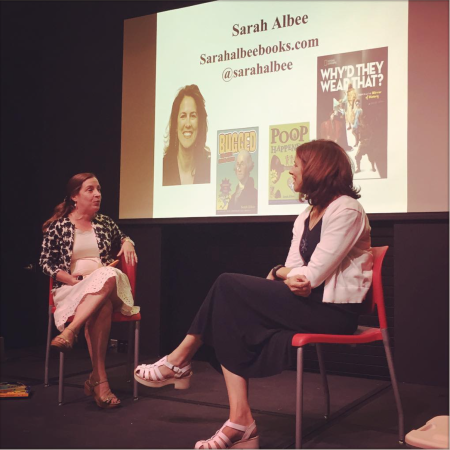 I had so much fun. I could have talked with Susannah and these teachers another two hours. Here’s the gang.This was the end of a very long, busy day for all of them, and it was 9:30 pm when we wrapped up. I couldn’t believe how many teachers stuck it out, and with such enthusiasm!
I had so much fun. I could have talked with Susannah and these teachers another two hours. Here’s the gang.This was the end of a very long, busy day for all of them, and it was 9:30 pm when we wrapped up. I couldn’t believe how many teachers stuck it out, and with such enthusiasm!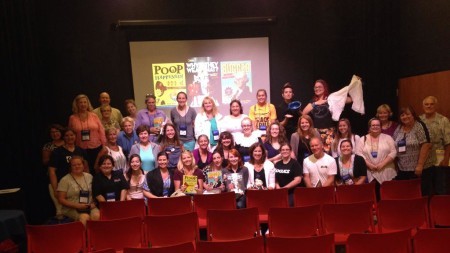 Teachers, if you have never been to this event, mark your calendars for next year. It’s truly awesome.
Teachers, if you have never been to this event, mark your calendars for next year. It’s truly awesome.
The post Confratute 2015 appeared first on Sarah Albee.
July 12, 2015
Authorizing

Sunrise this morning. I got here a day early, and had the whole place to myself.
This week, I am back at my annual writing retreat in upstate New York, overlooking beautiful Lake Champlain near Plattsburgh, NY. I can look across the lake and see the Green Mountains of Vermont, and the twinkling lights of Burlington–where I grew up. I’m here with a couple of dozen other children’s book writers. We’ll be spending the next several days writing in solitude, in this stunning setting, sharing meals together that someone else cooks. This blog will resume next week!
The post Authorizing appeared first on Sarah Albee.





